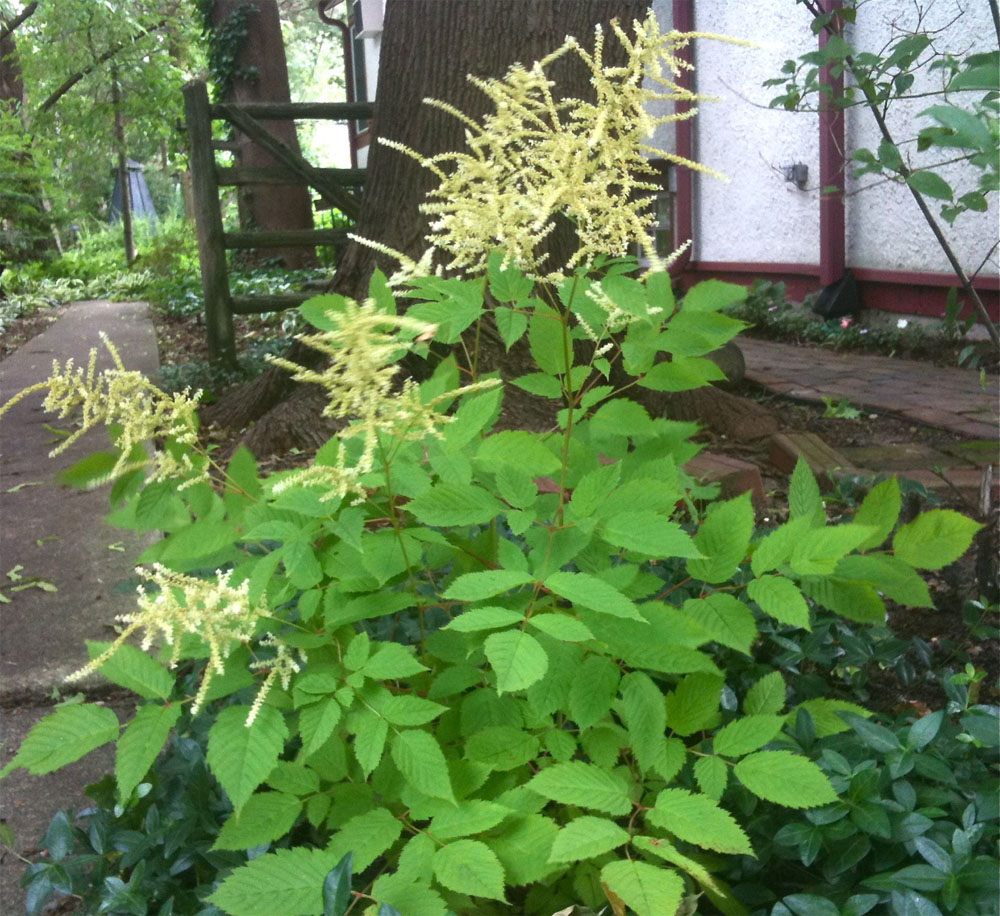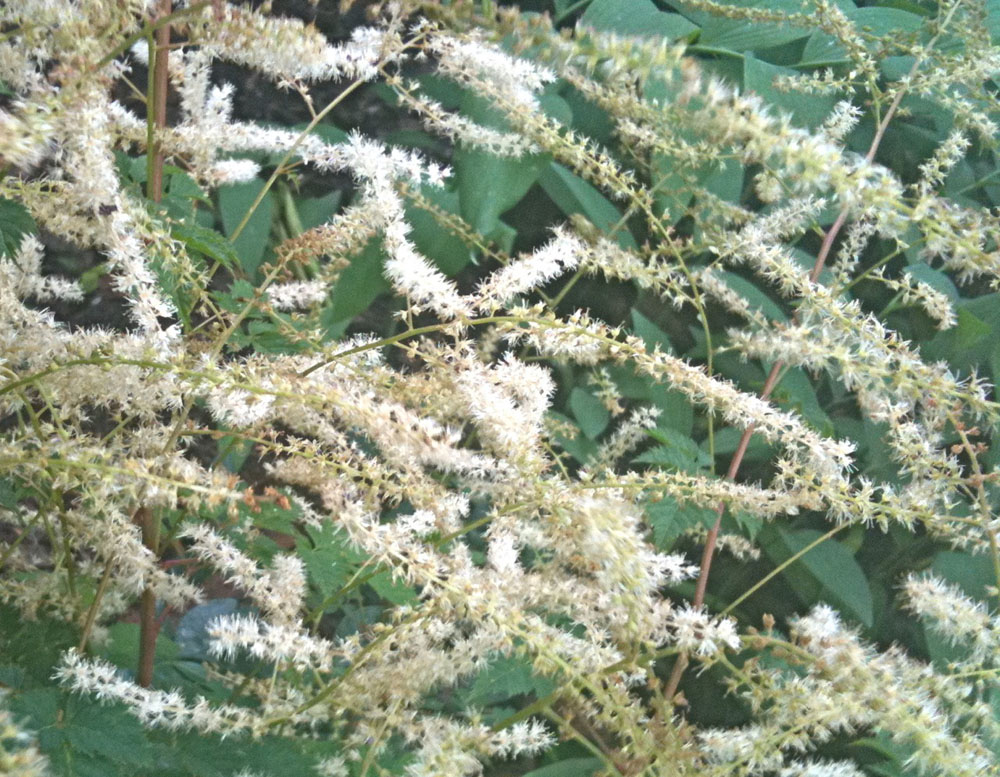Goat's Beard
 Goat's beard, Aruncus dioicus, sometimes spelled goatsbeard and sometimes called White goatsbeard, is a wide-ranging woodland perennial of the rose family native to North America, particularly the northeast, that also calls Europe and Russia home. By mid-summer it forms large, showy, astilbe-like clusters. First pic here shows the blooms in formation as yellow-green spikelets; see below for what they look like full-blown.
Goat's beard, Aruncus dioicus, sometimes spelled goatsbeard and sometimes called White goatsbeard, is a wide-ranging woodland perennial of the rose family native to North America, particularly the northeast, that also calls Europe and Russia home. By mid-summer it forms large, showy, astilbe-like clusters. First pic here shows the blooms in formation as yellow-green spikelets; see below for what they look like full-blown.
Goat's beard likes moist soil and dappled shade the best but seems extremely well-suited to the clays and loams of the North Shore. I planted several in spots that get little morning sun, only a few hours in the afternoon. Expect the typical "first year sleep, second year creep, third year leap," and with more than minimal sun they can become almost bushlike. Dense and leafy, good for filling in woodland edges, among the first to start shooting up in April, and they take up spaces the bluebells abandon in June. The blooms last nearly a month and then, unless knocked down by storm, form dried flowers with seeds that provide shelter for pollinators and food for birds.


- Printer-friendly version
- Log in to post comments
